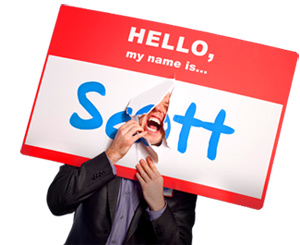A receipt is a written acknowledgment that money has been collected for the purchase of goods or service.
And originally, the function of the receipt was largely managerial. After a sale was made, the receipt established time of customer arrival, kept record of the inventory, enhanced fraud protection, helped reconciled financial statements and stopped employees from pilfering company profits.
But that was over a hundred years ago.
Now, the receipt is less of a static record and more of a sharing device.
When our favorite band releases a new album, we don’t just go to iTunes, pay our ten bucks, download the files, stick our ear buds in and start rocking out.
We share.
And the receipt, the record of that purchase – a picture, a link, a tweet, a status update, a wall post or a check in – becomes the social object that tells our relevant network, hey everybody, I’m listening to this music right now and I want to share it with you so we can experience this moment together.
The receipt becomes, as Brian Solis suggests, a platform for extending experiences.
Paying is just the beginning. Transactions are becoming social objects.
It won’t work for every product. And it won’t work for every customer. But for the brands that dare to expand their definition of what a receipt can become, look out.

